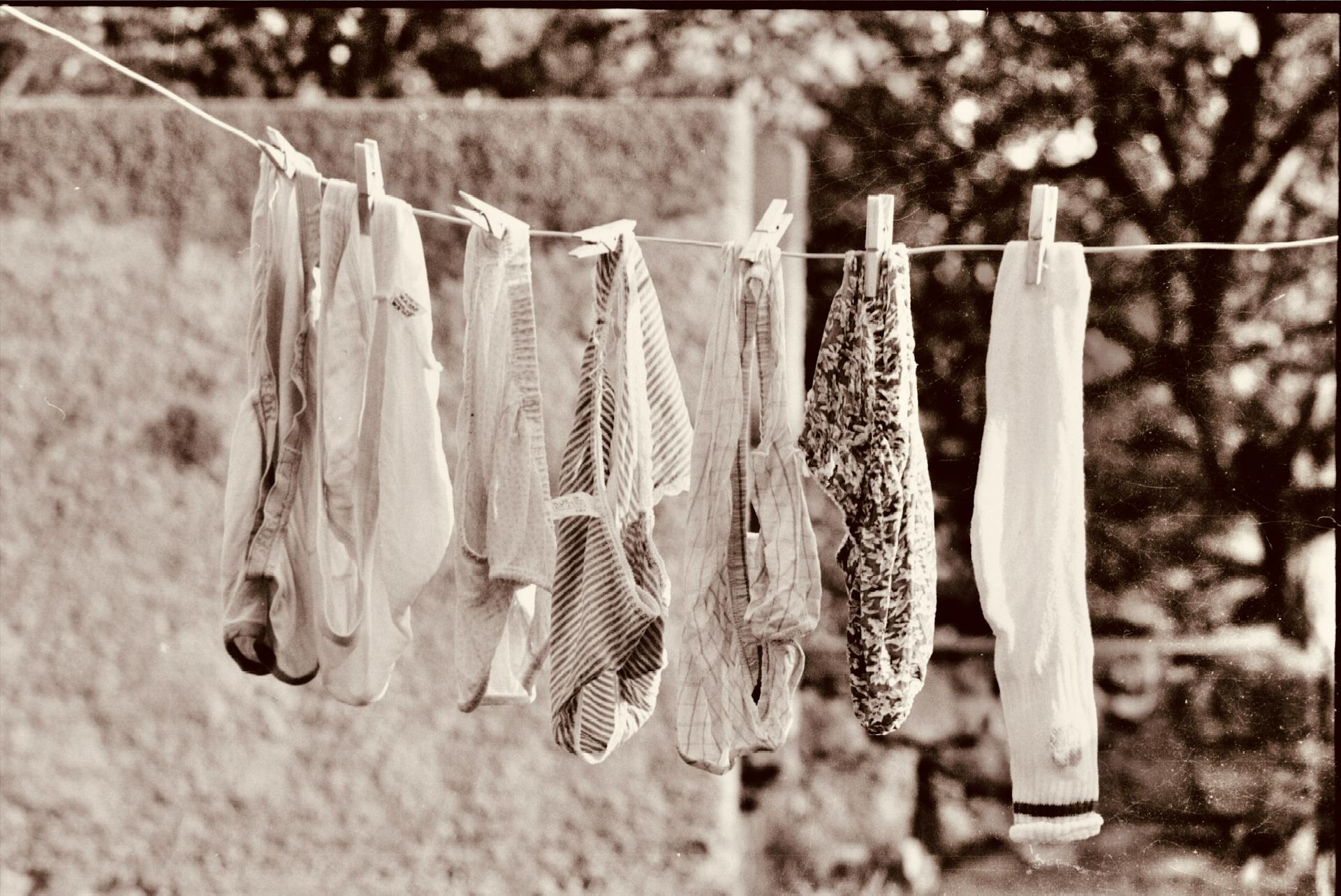
Storing clothes in a storage unit can be tricky for those living in smaller homes or who need to store large amounts of clothing items. In order to ensure clothes don't wear, wrinkle, or get damaged in your storage unit, it is important we follow a few simple steps.
The first step is to clean and examine all the clothing that you plan to store. Check each item for any damage before carefully folding it neatly and placing it in an air-tight container. A breathable fabric bag or box lined with cedar should do the trick and will keep clothes fresh and ready to wear when you retrieve them after months of storage!
Second, pay attention to humidity levels when selecting your storage unit. When storing clothes outside of your home, try to select a place that has a low relative humidity (ideally 40-50%), as this helps prevent mildew and mold from developing on the fabric over time.
Finally, Arrange items in their containers systematically so you can find individual items quickly in the future if needed! This may include organizing by type or color, layering thicker items at the bottom of boxes for protection and using labels for clarity.
Following these simple steps is key when storing clothes in a storage unit. From cleaning garments beforehand to controlling humidity levels and organizing items systematically, doing this now can save you time and money down the line as you won't have to replace any clothing due to damage!
What are the best ways to keep clothes organized in a storage unit?
Organizing clothes in a storage unit can be an overwhelming task, but there are various approaches to help make it easier and keep the items organized. Here are some tips to help you maximize your storage unit space and keep your clothes neatly organized:
1. Make use of storage containers – Storing items can be made much easier with the use of storage containers such as boxes or plastic bins. With durable build and clear labels, storage containers make it much simpler to clearly distinguish what is stored within and easy accessibility is also achieved by having easily stackable components. Furthermore, using waterproof or sealed containers can also protect from damp or dust getting into clothes.
2. Hang clothes – Investing in wire hangers or peg boards allows you to store more items while taking up minimal space as hanging garments will ensure they don’t bunch up while in storage - this also making unpacking convenient and easy. By attaching peg boards onto walls or dividers, further categories of clothing items such as coats, suits and evening wear can more effectively organised and found when needed.
3. Be creative – Create makeshift shelves with wooden pallets or use blankets/drapes to separate racks/shelves for more specific categorization according to dressy/casual attire etcetera; adding shoe holders will also guarantee that footwear isn’t strewn about the unit come the time of retrieving items from the unit. Some bins may even provide holes for hangers such that garments may be hung without needing wall aid, simultaneously saving on space whilst keeping items easily accessible.
With thoughtful organization, let these tips guide you into creating a neat, organized closet with ease!
How do I fit a large amount of clothes into a small storage unit?
Finding ways to efficiently organize your belongings is always a challenge, particularly when you have a large amount of stuff and limited storage. Luckily, there are plenty of strategies for fitting a large quantity of clothing into a small wardrobe or storage unit.
First, make sure all the clothes you wish to store are folded flat and neatly organized first. Clothing that is stored in bulk, such as t-shirts and sweaters can be rolled and stored side by side. Utilize any existing shelves or drawers already present in the wardrobe to neatly stack any clothes that may be wrinkle-resistant - such as cotton fabrics - that don't need to be folded. Create additional storage solutions by adding wire baskets, bins, extra hangers or shoe holders. Hang these on the inside door of your closet or along walls to give yourself extra space. Utilize corners by creating space vertically with bookcases or stackable shelving units that can fit multiple items at once.
Finally, invest in some storage solutions made specifically for clothing such as under-the-bed organizational bins or hanging garment bags that can hang from any ceiling surface. If you want to maximize the amount of space available even further, consider utilizing cubby shelves instead of traditional dresser drawers to accommodate tightly folded items. With these practical tips and tricks in mind, you'll be able to fit all your clothing into virtually any wardrobe no matter how small!
Explore further: Store Large Brim Hats
What precautions should I take when storing clothes in a storage unit?
When storing clothes in a storage unit, there are many precautions to take in order to ensure the preservation and longevity of your items. First, it is important to make sure that the storage unit is climate-controlled, proper temperature and humidity levels are necessary for storing clothes in ideal condition. Secondly, pick out proper packaging material for your clothes. Soft cloth or breathable cardboard containers will help protect your items from dust or pests. You can also consider getting some vacuum-sealing bags to store lighter and more fragile garments. Finally, sort through your clothes before placing them in the storage unit. Be sure to organize them carefully taking note of any items that require special attention or treatment from moths or moisture.
Ultimately, picking the appropriate storage unit and taking all of these necessary precautions will help you keep your clothes safe for longer periods of time. Proper care plus routine cleaning and checks on the conditions of both the environment and contents will guarantee only positive results when it comes time to retrieve them from their storage slumber. Whether you are moving house or simply need a temporary space solution, these simple tips can make a big difference in how presentable and wearable your clothing remains over a period of time.
What materials should I use to wrap and protect my clothes before putting them in a storage unit?
When it comes to protecting and preserving your clothing and keeping it looking new before packing it away in storage, you want to make sure you use the appropriate materials that won’t damage the fabric or put them at risk while they’re stored away. You’ll want to choose materials that will give your clothes enough coverage and insulation without compromising breathability, as clothes stored in airtight containers can encourage mold growth and leave cloths smelling musty.
Ideally, you should wrap each individual piece of clothing with acid-free white tissue paper or unbleached muslin cloth. This will allow the clothing to breathe while helping seal out dust and dirt particles. Avoid using newspaper print dye which can transfer onto clothing and instead opt for acid-free paper instead. If you expect moisture build-up, look into wax paper sheets whose nonporous layer does an excellent job of repelling moisture even if stored in plastic boxes or resealable bags.
Label each item accordingly so that when you’re ready to take them out again, you know exactly which clothes are where. Finally, store all items properly in plastic bins leaving room for air circulation and make sure the box lid is shut securely so there are no dampness issues during storage.If done properly, your garments should remain dust free, odor free and undamaged until you’re ready to utilize them again!
Is it necessary to air out clothes before storing them in a storage unit?
When storing clothes in a storage unit, it is important to make sure that they are thoroughly aired out first. While clothes might seem dry after being worn and washed, there can still be particles of moisture left behind in fabrics. These small particles of moisture can corrode materials over time and cause mold growth in warmer temperatures.
Airing out your clothes is easy and effective. The best way to make sure the air can reach all areas of your items is to hang them up rather than throwing them in a pile or bin. This will help the air circulate and reach all surfaces evenly. This ensures that every inch of the fabric will get a proper airing out to prevent any unnecessary damage from occurring. Floor fans can also be used in addition to hangers to aid the process further.
Taking these extra steps before storing your clothes can save you from having any unpleasant surprises when you open your storage unit at a later date. Prevention is better than cure, so it’s best to take the time to air out your items properly before storing them away for an extended period of time.
What temperature and humidity levels are best in a storage unit for clothes?
When storing clothing, temperature and humidity are crucial to consider in order to ensure the clothing stays in good condition. The ideal temperature range for storing clothes is between 50 and 70 degrees Fahrenheit. The outside temperatures should not exceed this range and there should be no significant swings in the temperature over a period of time.
Humidity levels, on the other hand, should remain between 40-50%. Any higher humidity levels can cause mold, mildew, and even encourage pests to move in. However, if it’s too dry, materials like leather that absorb moisture from the air can become damaged or harden. If possible it’s best to store items away from direct sunlight since that could lead to fabric fading or discoloration.
It is important for a storage unit for clothes to be secure from temperatures outside of the recommended range and from moisture conditions that could cause damage. Ensuring the correct temperature and humidity levels will help maintain the quality of your garments and make them last longer.
Sources
- https://belleairstorage.com/eight-crucial-tips-for-storing-clothes-in-a-storage-unit/
- https://blog.selfstorage.express/tips-on-how-to-prepare-clothes-in-storage-unit/
- https://northeasterngroup.com/how-to-store-clothes-in-a-storage-unit/
- https://www.move.org/store-clothes-storage-unit/
- https://www.southernselfstorage.com/blog/how-to-store-clothes-in-a-storage-unit/
- https://www.moving.com/tips/17-items-that-require-climate-controlled-storage/
- https://www.kentstorage.com.au/how-to-pack-clothes-for-storage-best-way-to-store-clothes-in-storage-unit
- https://www.rd.com/article/clothes-storage-ideas/
- https://www.guardianstorage.com/how-to-store-clothes-in-a-storage-unit/
Featured Images: pexels.com


